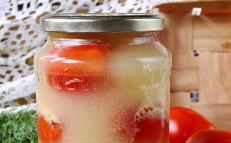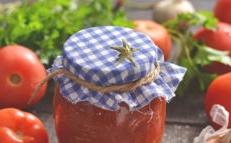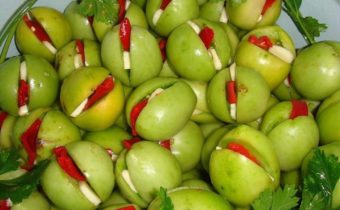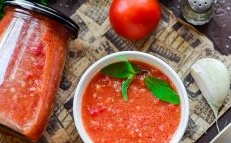Why I do not plant garlic and strawberries on the same bed
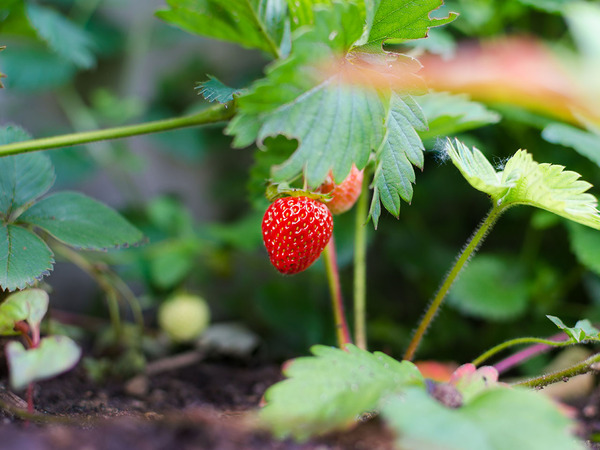
Planting of several garden crops on one bed is carried out with a shortage of space, to protect against diseases and pests, for decorative purposes. Compatibility and maintenance conditions affect the choice of neighbors — you can plant a number of crops that have the same lighting, moisture, soil composition needs. It is believed that the garlic and strawberries planted next to each other help each other, but this accommodation option also has opponents. Making a choice will help consideration of the opinions "for" and "against."
Joint planting - benefits, agricultural technology
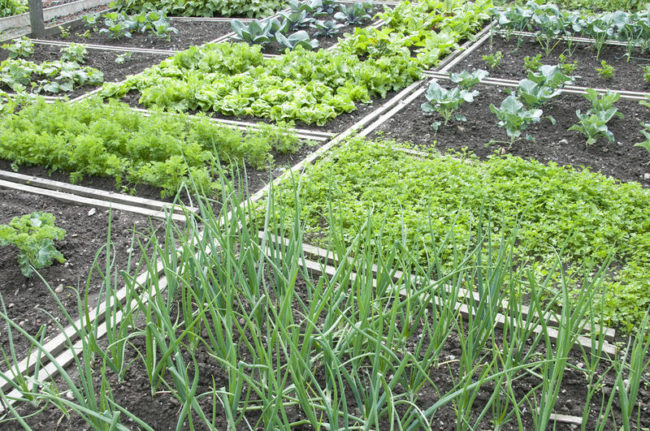
Proponents of the view that garlic and strawberry helpers, plant them on the same bed or make a ridge nearby - both options are acceptable. Both winter and spring garlic are suitable for joint planting - the main thing is to do everything on time and correctly. Consider the option of landing on one ridge.
Neighborhood benefits:
- rational use of the landing area in case of its shortage;
- positive effects of crops on each other;
- garlic phytoncides, acting as an insecticide, reduce the risk of pests on the aerial parts and on strawberry roots (nematode, aphid, tobacco thrips, bear, strawberry mite, strawberry weevil, slugs);
- biologically active substances of garlic help to resist fungal infections (various types of rot, blight, fusarium, powdery mildew, etc.);
- crop rotation prevents soil depletion;
- Neighborhood affects the quantity and quality of the crop - garlic heads are large, the strawberry yield is higher;
- moisture requirements are the same, so it is convenient to water;
- You can feed the same fertilizer.
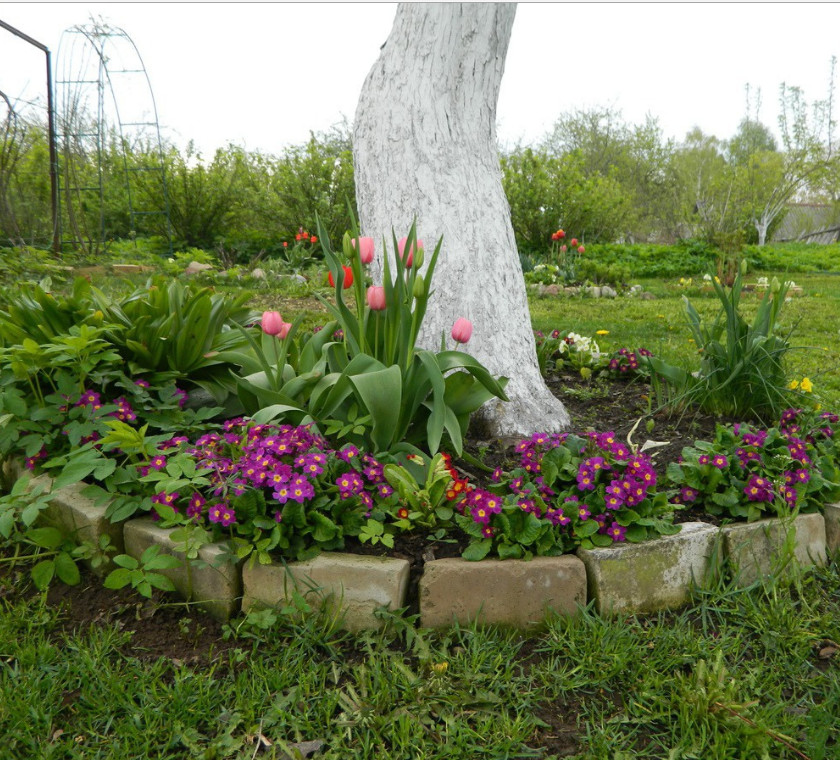
Autumn planting
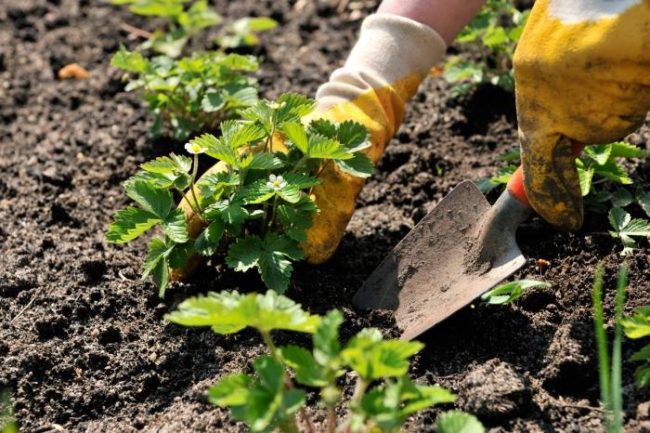
It is necessary to start planting winter varieties of garlic after the preparation of strawberries for winter (approximately mid-October): pruning, weeding, loosening, feeding, treatment from pests, watering. Loose, fertilized soil is ready for planting cloves to a depth of 5 to 6 cm in the furrows between the rows of strawberries or along the perimeter of the ridge.
To protect against frost and moisture loss, a bed is covered with a layer of rotted leaves, grass, and humus. Mulch, in addition, will be a source of additional power. It is possible to add wood ash, ash from the burning of tops, grass, hay, foliage, remnants of garden plants.
Additional warming will be straw, dry foliage, coniferous branches - they will keep the snow and protect the soil from freezing in the absence of snow cover. In the spring, after the snow melts, you need to remove the shelter in a timely manner so that the plants do not mate. It is noted that the garlic planted in this way, grows early - in early April, and the heads grow large (up to 7 cm in diameter) and strong.
Spring garlic is planted after the snow melts when the soil temperature reaches 5 ° -7 ° C.
Care
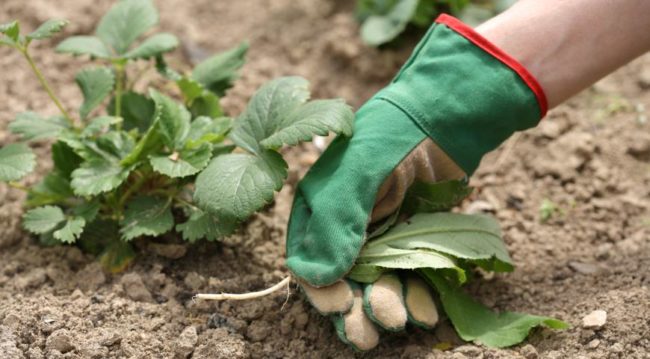
Care activities begin in early spring, when there is still snow - on the surface of the garden, right across the snow, scatter the fertilizer granules. You can use a mixture of 10 g of ammonium nitrate, 20 g of superphosphate and 10 g of potassium salt per 1 m². When the snow melts, the granules will dissolve and enter the soil together with the water.If it was not possible to feed during this period, then fertilizers are scattered before the first rain or watering.
After the emergence of shoots to hold a shallow loosening of rows with strawberries, trying not to damage the roots, shed the soil with a pale pink solution of manganese, then put a little humus under each shrub. Summer feeding consists of watering infusion of bird droppings, mullein.
The arrows in garlic need to be cut off to form large heads, since the nutrients will be spent not on the formation of bulbous (seeds), but on the nutrition of the underground part. They do not need to throw out the arrows - they are used as a vitamin supplement to dishes, fried, stewed, after blanching they are frozen for winter consumption, used to prepare an infusion for treating garden plants from pests.
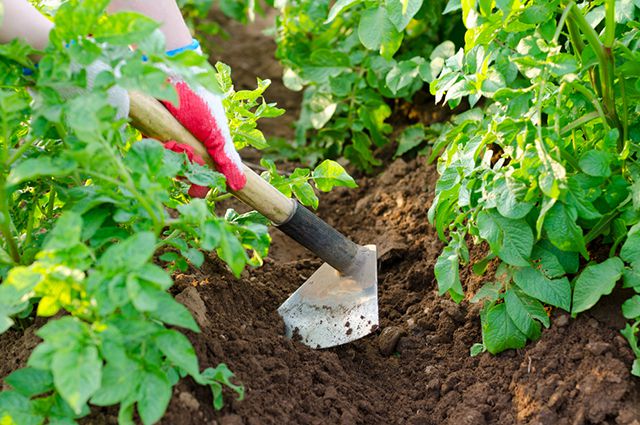
Strawberries and garlic are demanding on soil moisture, so watering should be regular taking into account weather conditions. If the weather is dry and hot, then abundant watering is needed once every 4-5 days.
When the heads are fully matured, they are dug using an agronomical knife (they remove weeds) in order to avoid damage to the strawberry roots.
Garlic tops can be cut all summer and used as vitamin greens, and do not dig heads. After wintering, they will give a new friendly shoots.
Opinion opponents of the joint planting of garlic and strawberries
Supporters of mixed cultivation have opponents arguing for their opinions.
Why do not plant garlic and strawberries together:
- common pests (tobacco thrips, some nematode species, garlic and spider mites, weevil, aphid), which, affecting one culture, will lead to infection of neighboring plants;
- when digging garlic is likely to damage the root system of strawberries.
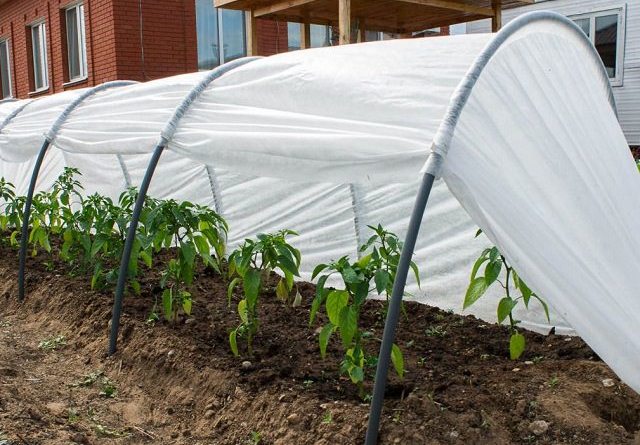
Plant or not strawberries and garlic on the same ridge - the choice is individual and depends on the growing conditions. There is no possibility to plant them together - you can make the beds next to garlic phytoncides for their intended purpose.


